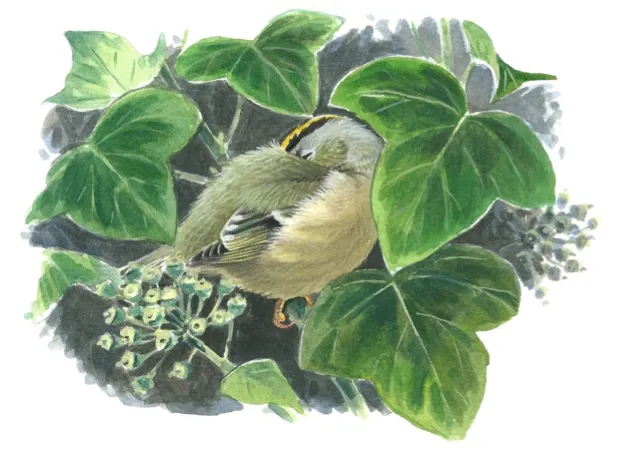Wren illustration © Mike Langman
Scottish wrens are bigger and hardier.
A recent study by University of East Anglia and the BTO found that wrens in Scotland tend to be larger and better able to survive overnight frosts than those in southern Britain.
Wrens are very territorial birds, but will roost and huddle together to keep warm.
Robins are usually highly territorial, but they can change their behaviour.
They will roost communally in very low temperatures.
Treecreepers suffer more in the wind and rain than in the cold.
They will squeeze into bark crevices to shelter from wintry conditions.
Long-tailed tits don't roost in holes.
Instead they huddle together low down in thick vegetation.
A roost of long-tailed tits will consist of related birds, usually a breeding pair with their latest offspring and some additional adults.

Goldcrest illustration © Mike Langman
Goldcrests will often huddle together in a globular mass with their tails sticking out.
As Britain's smallest bird, weighing just 5g, cold poses a significant risk to goldcrests.
In extreme cold, they can lose a fifth of their bodyweight overnight.
